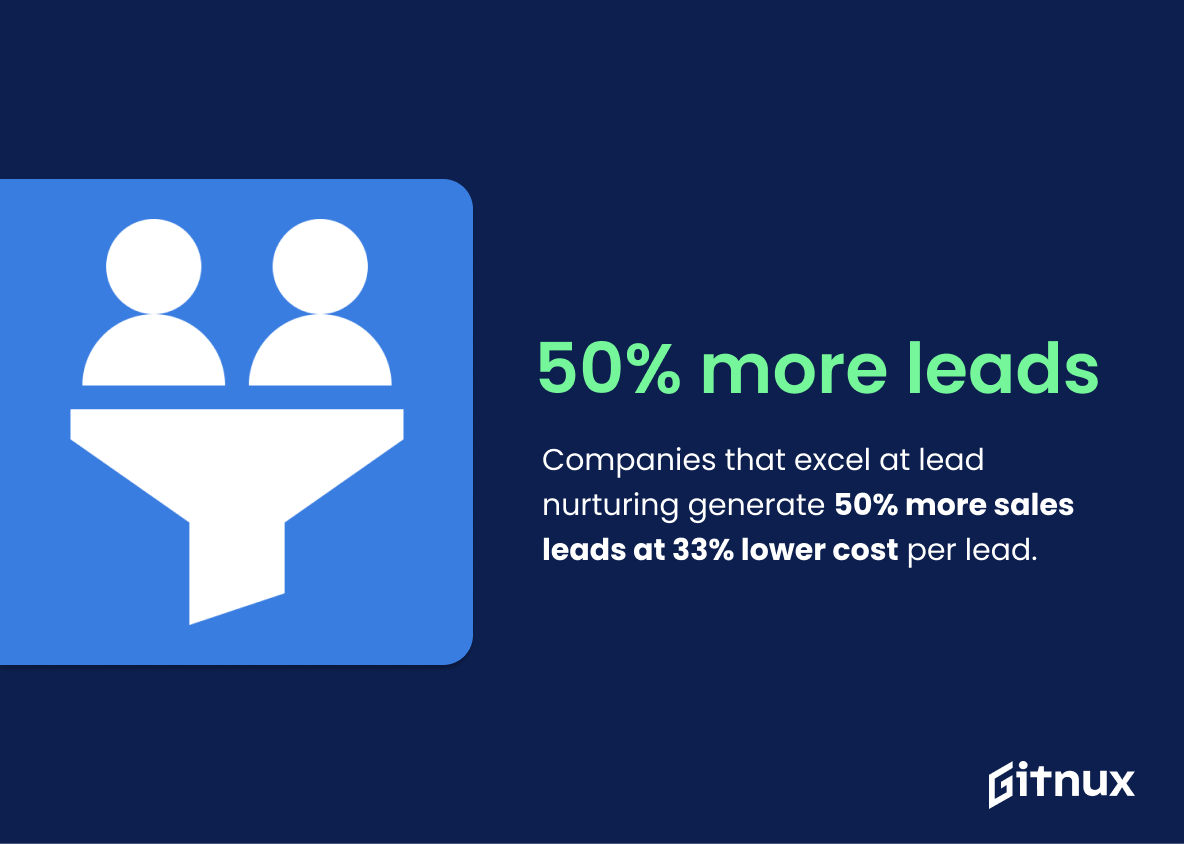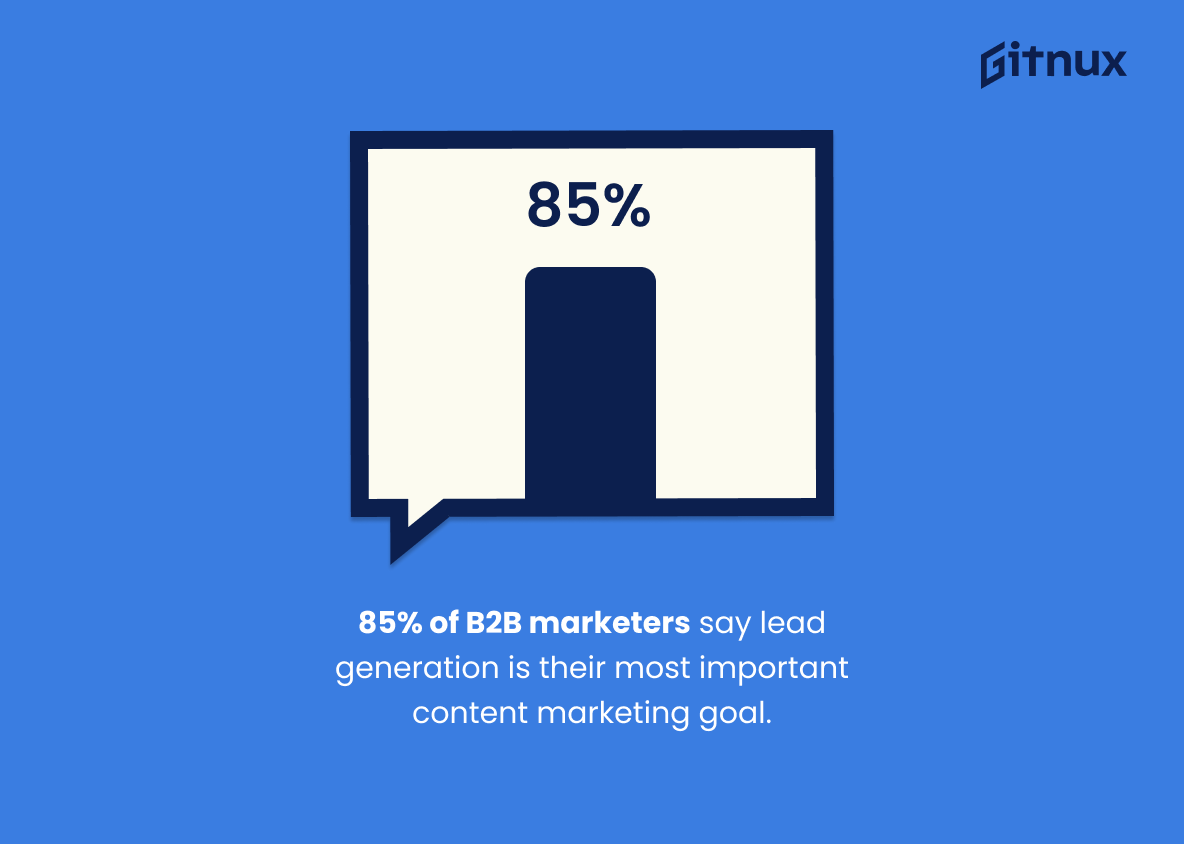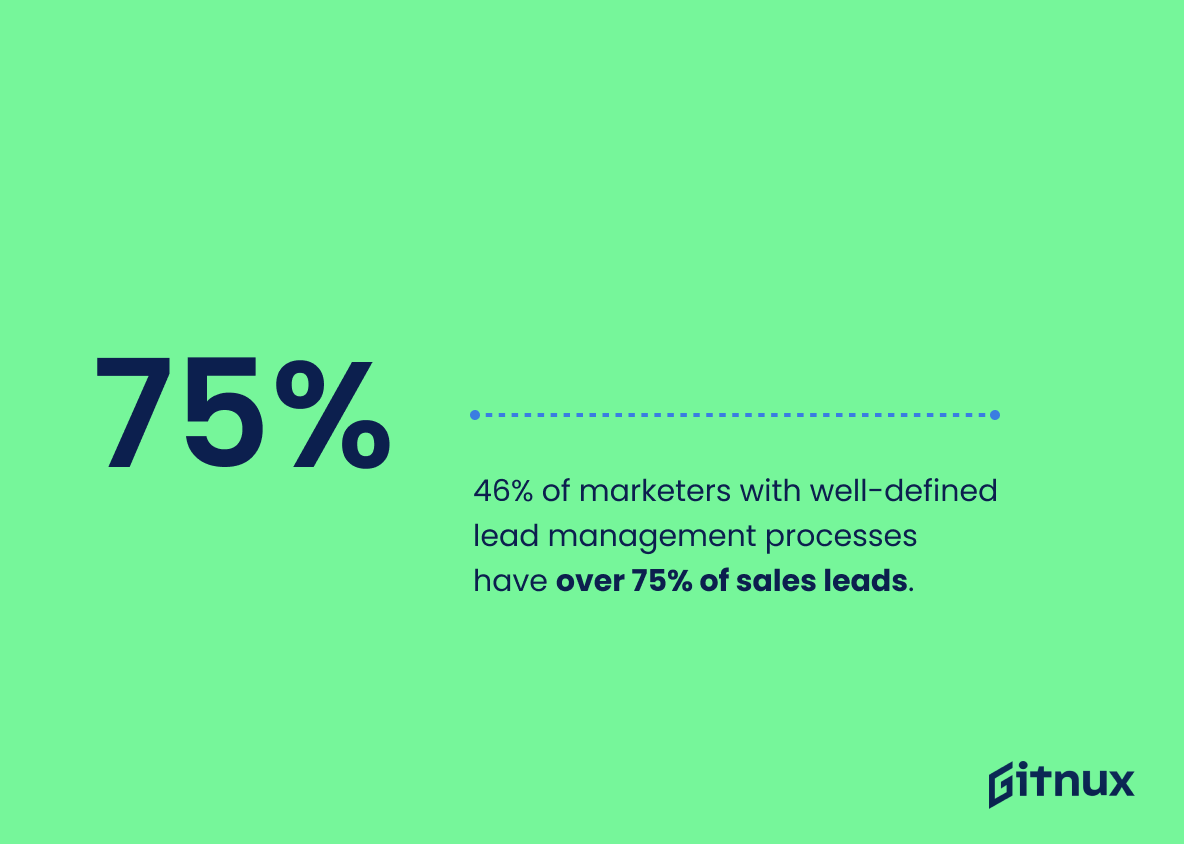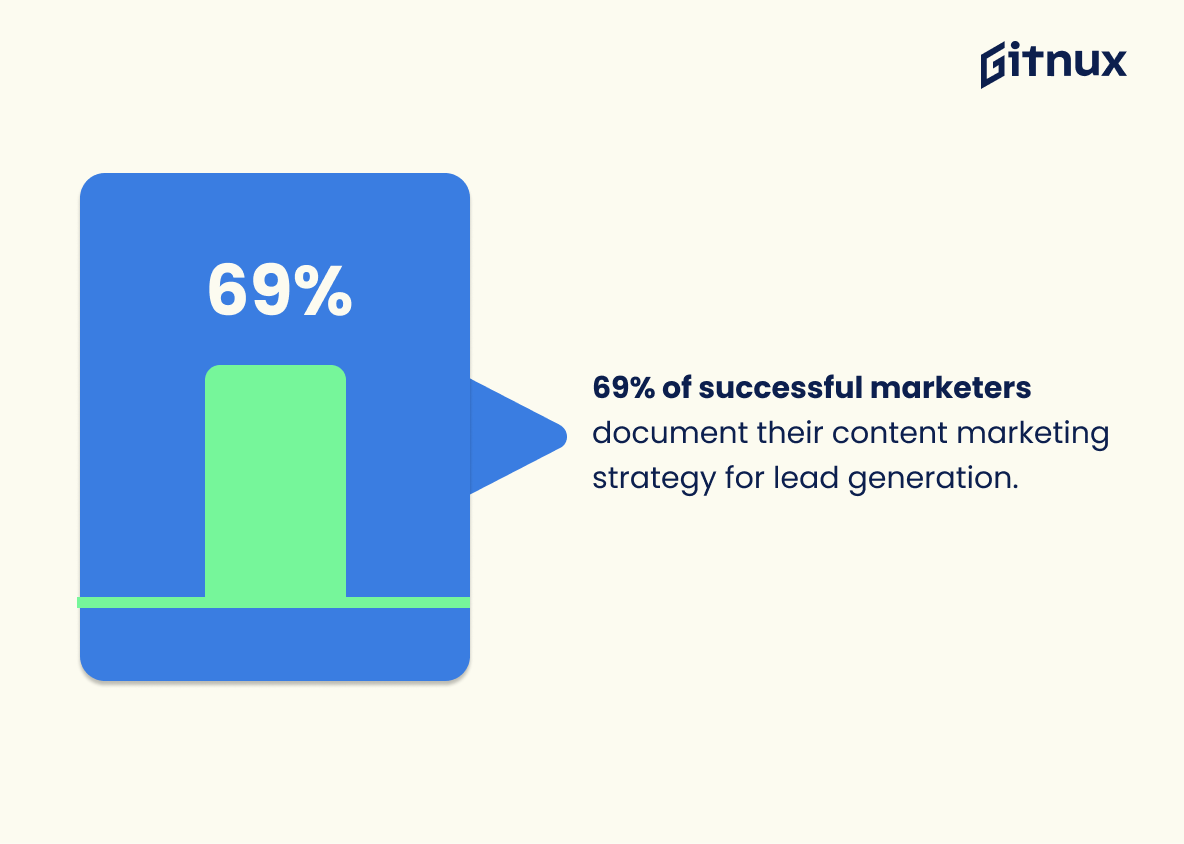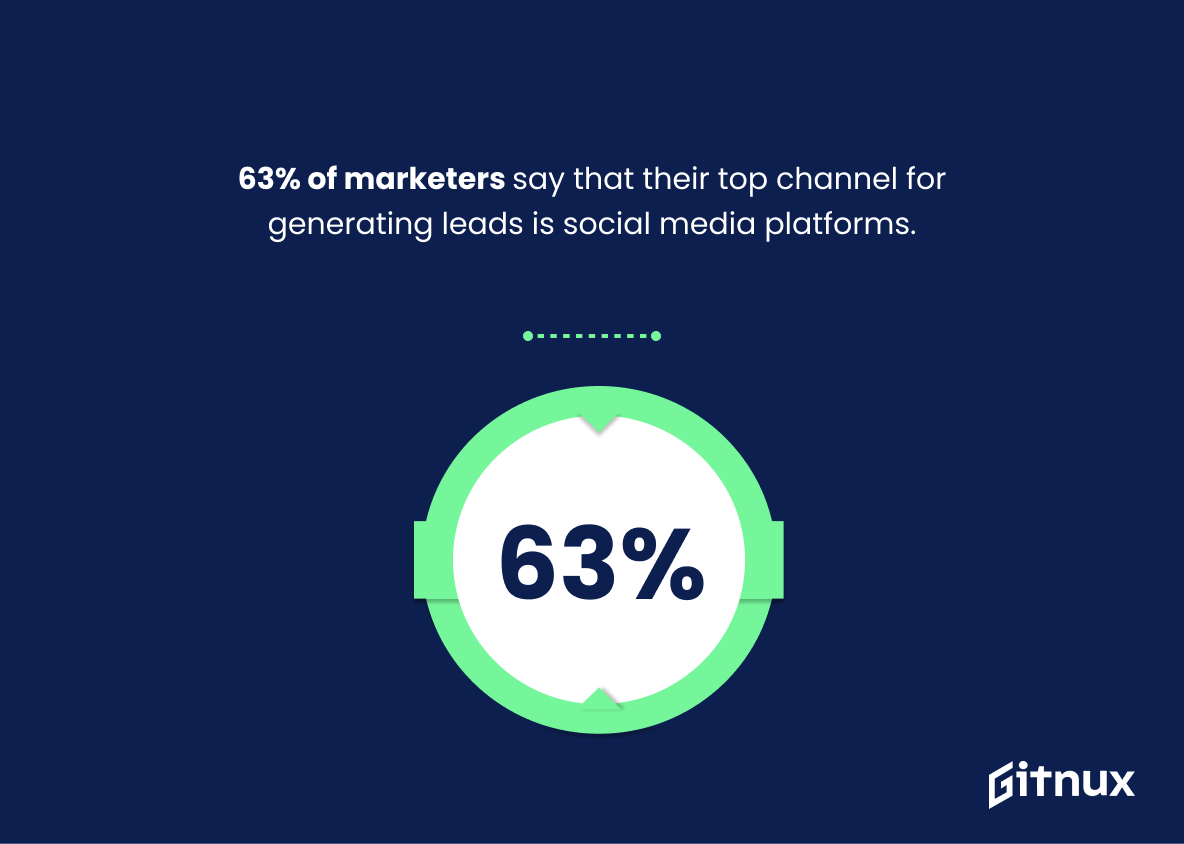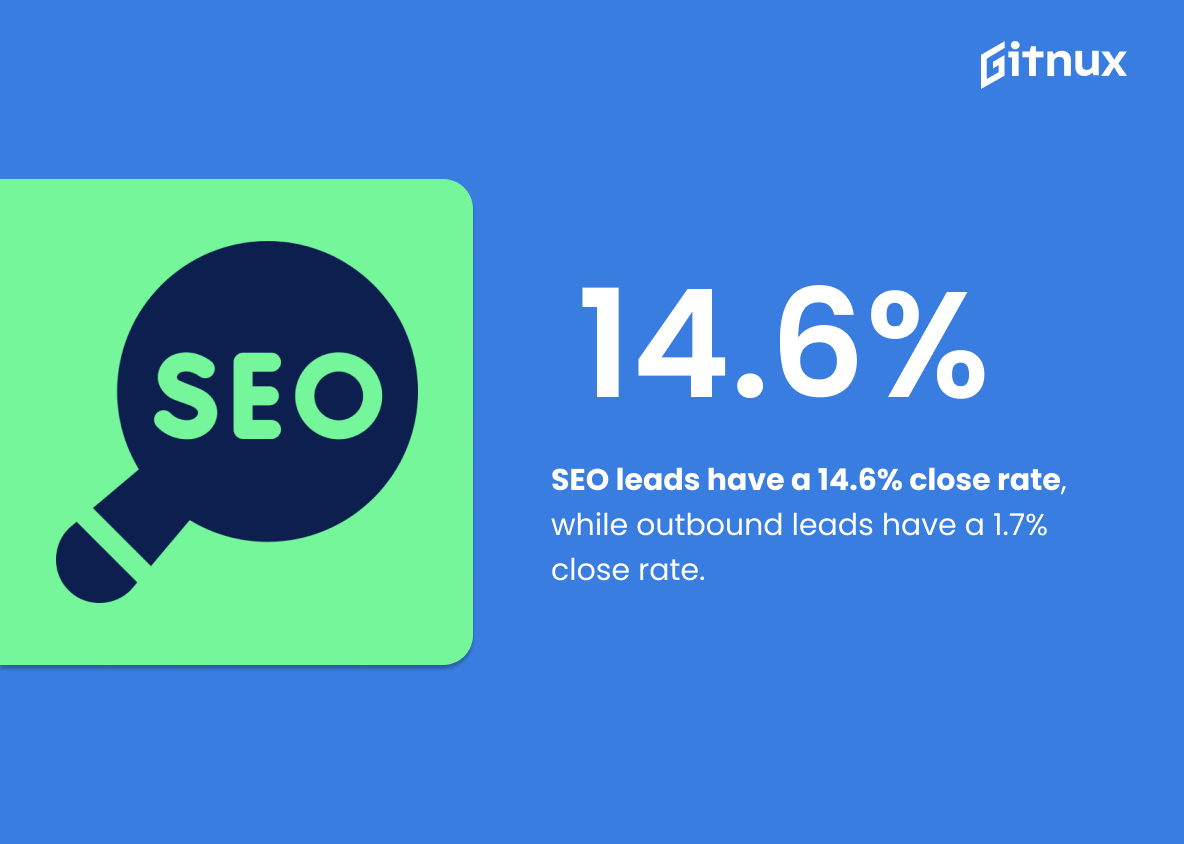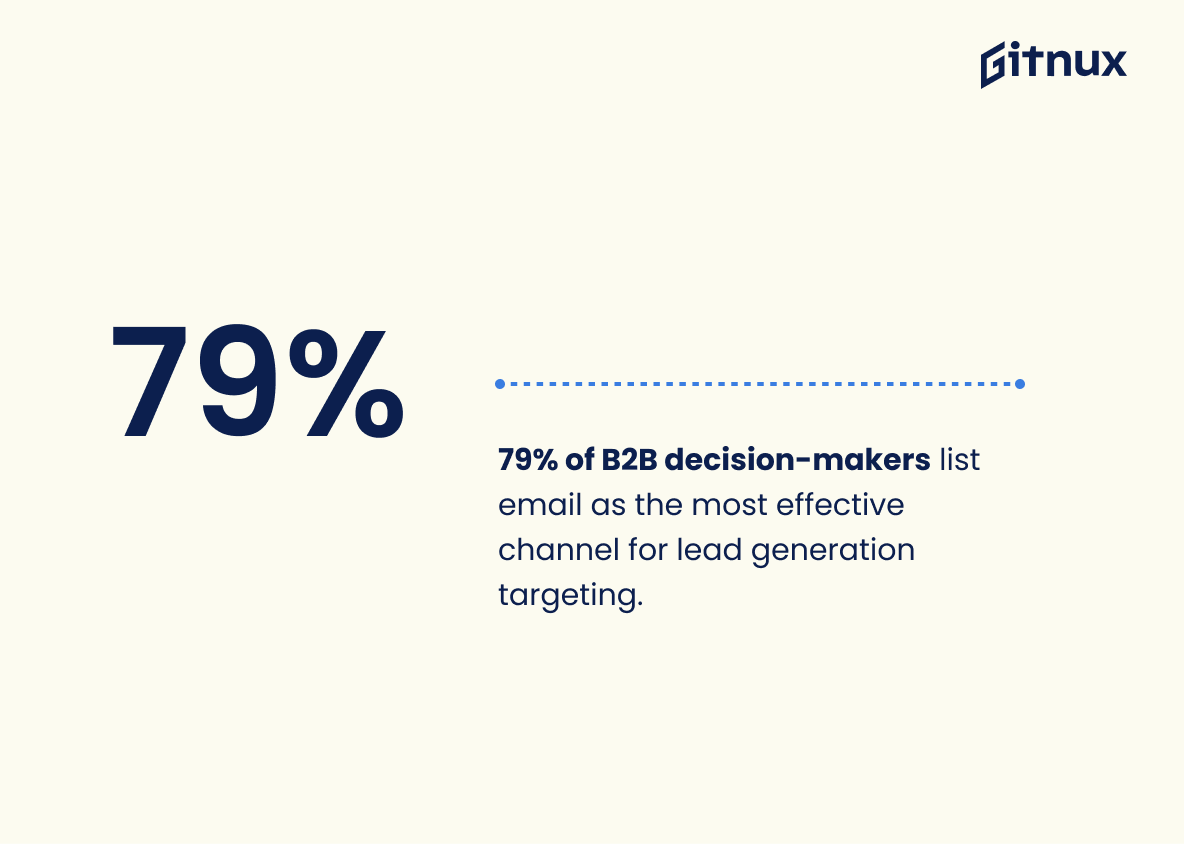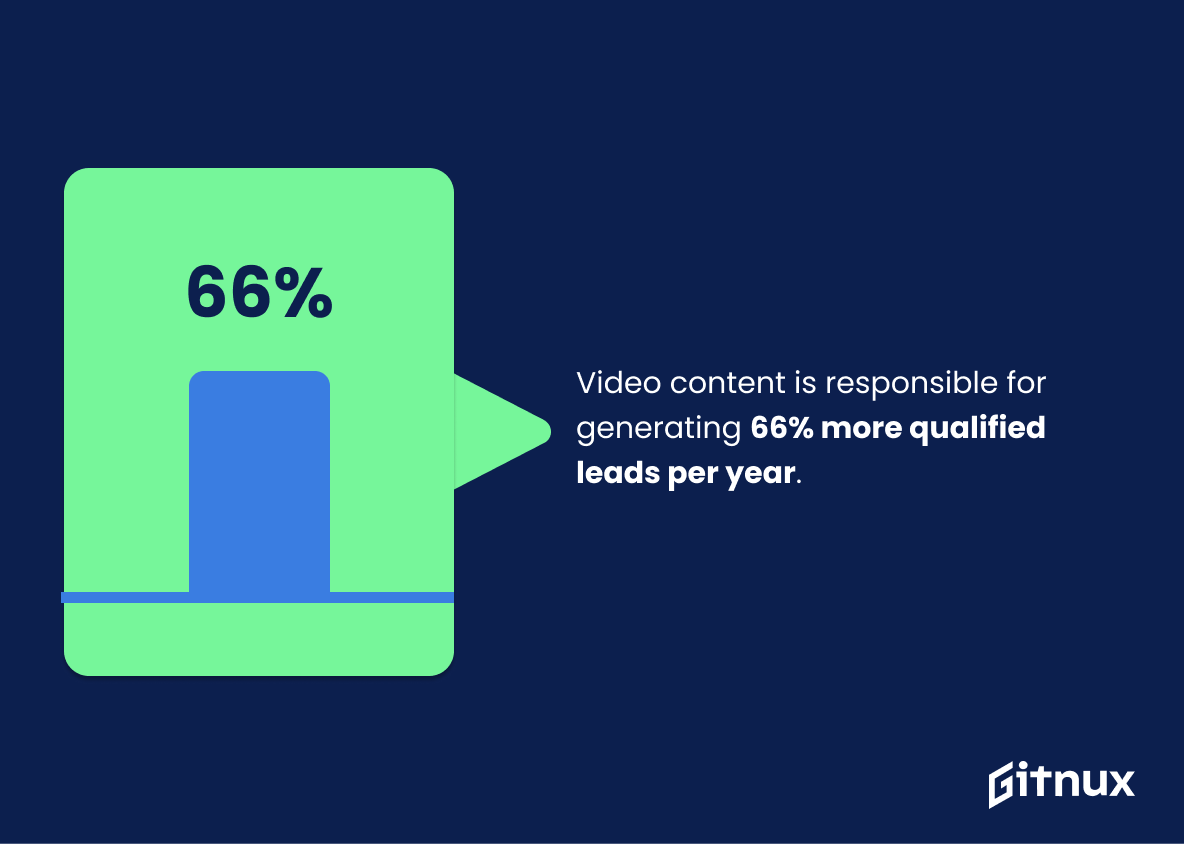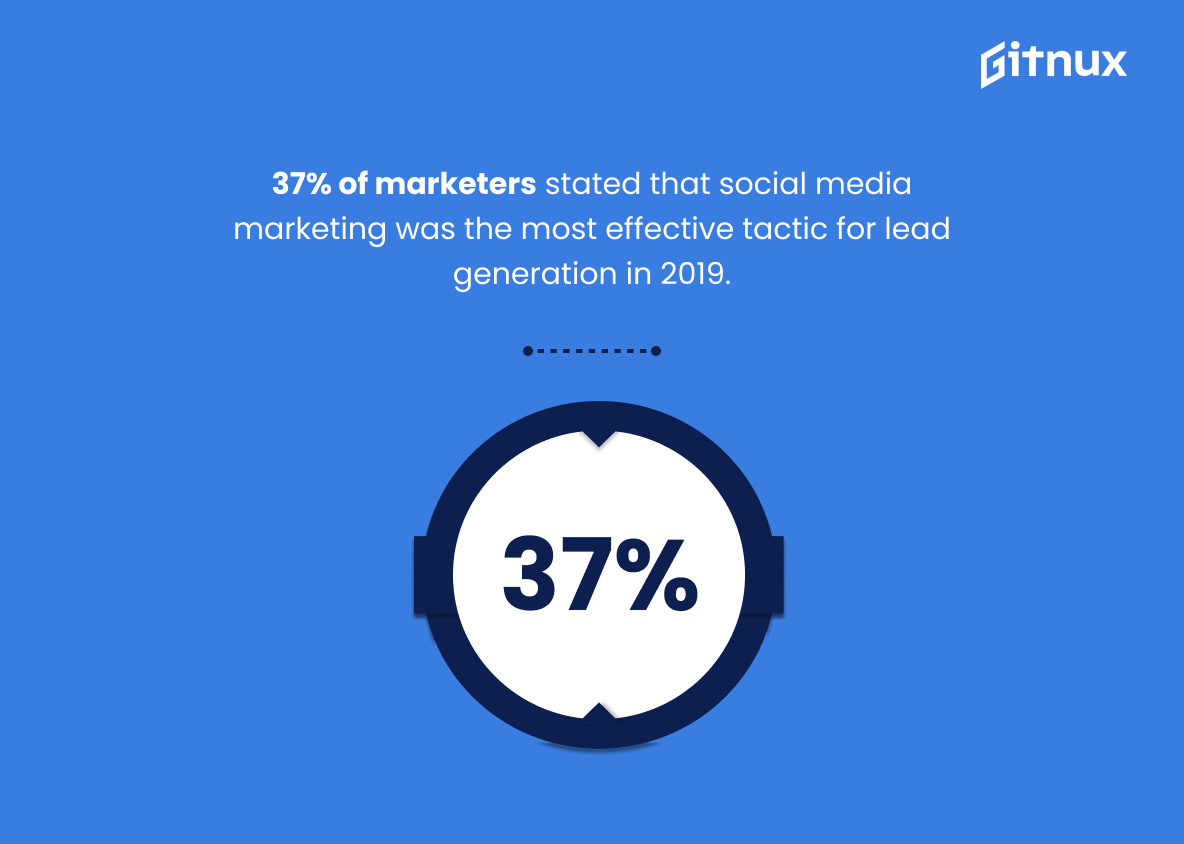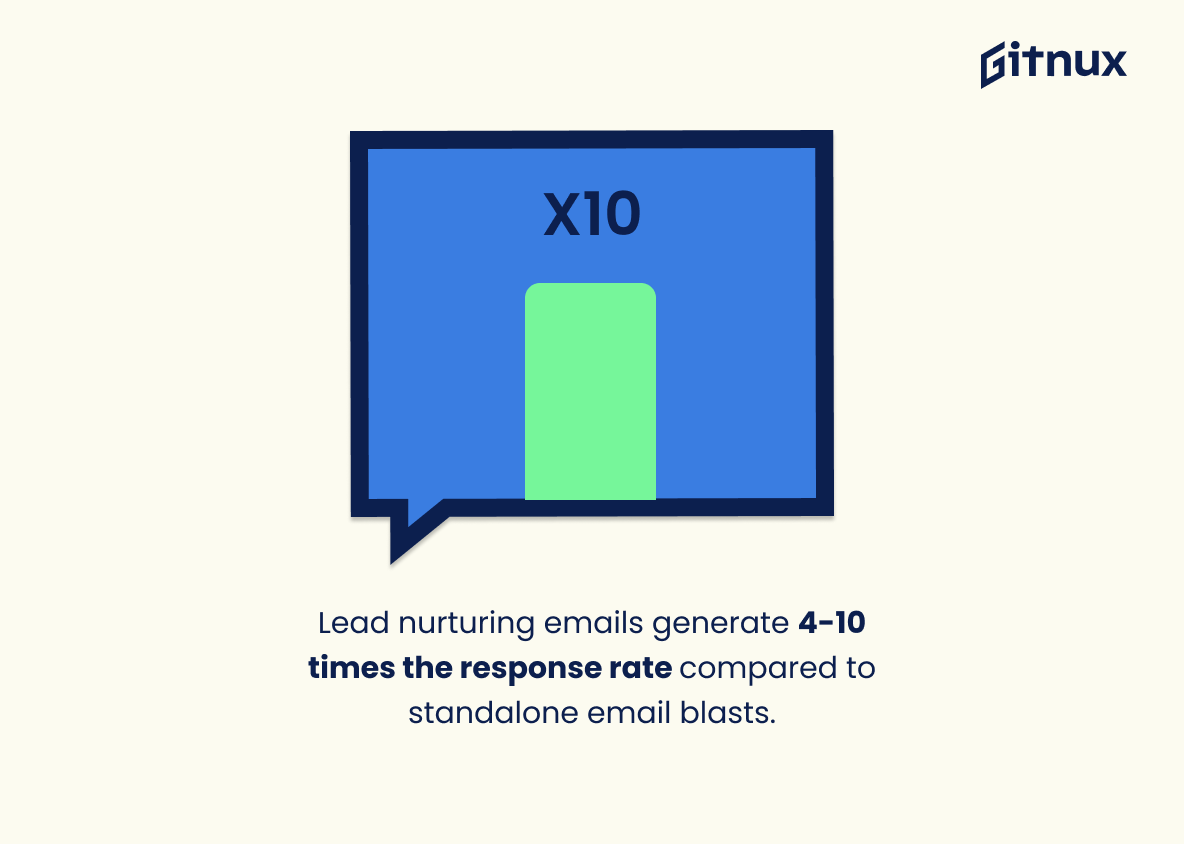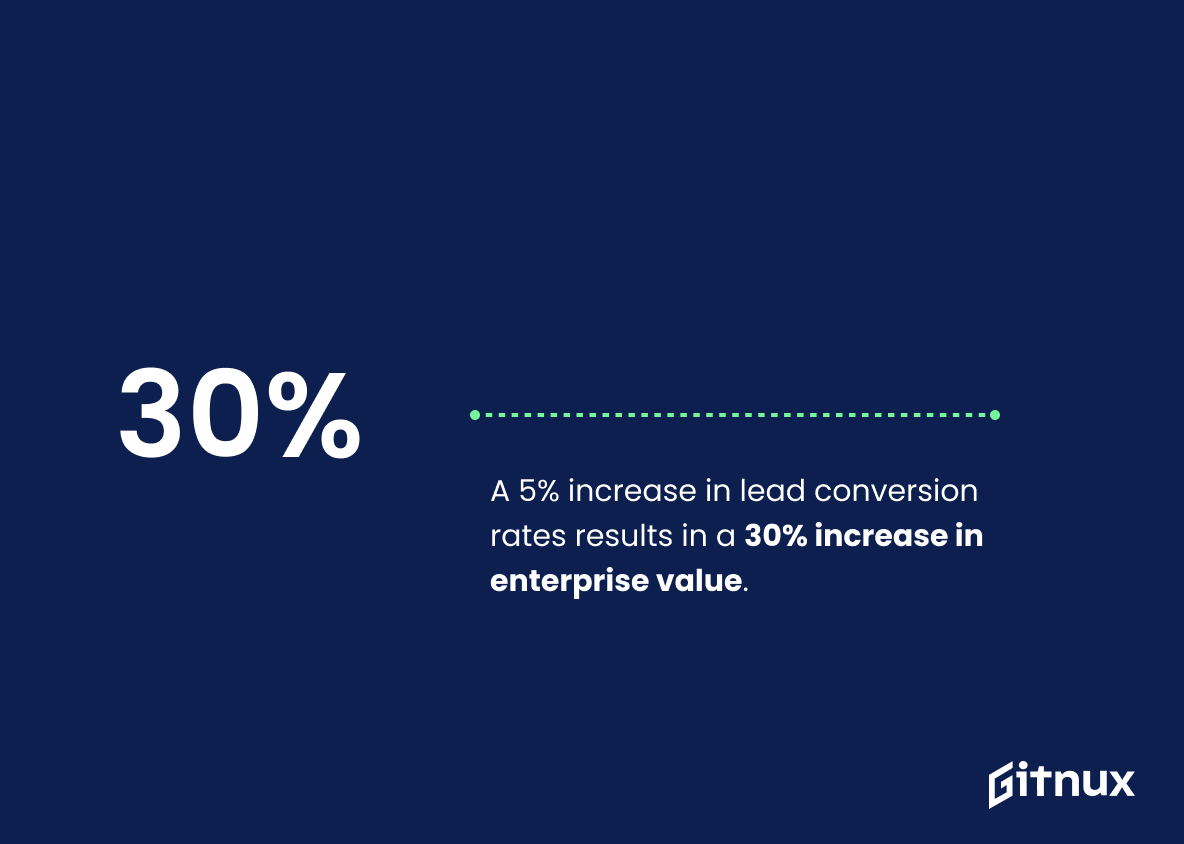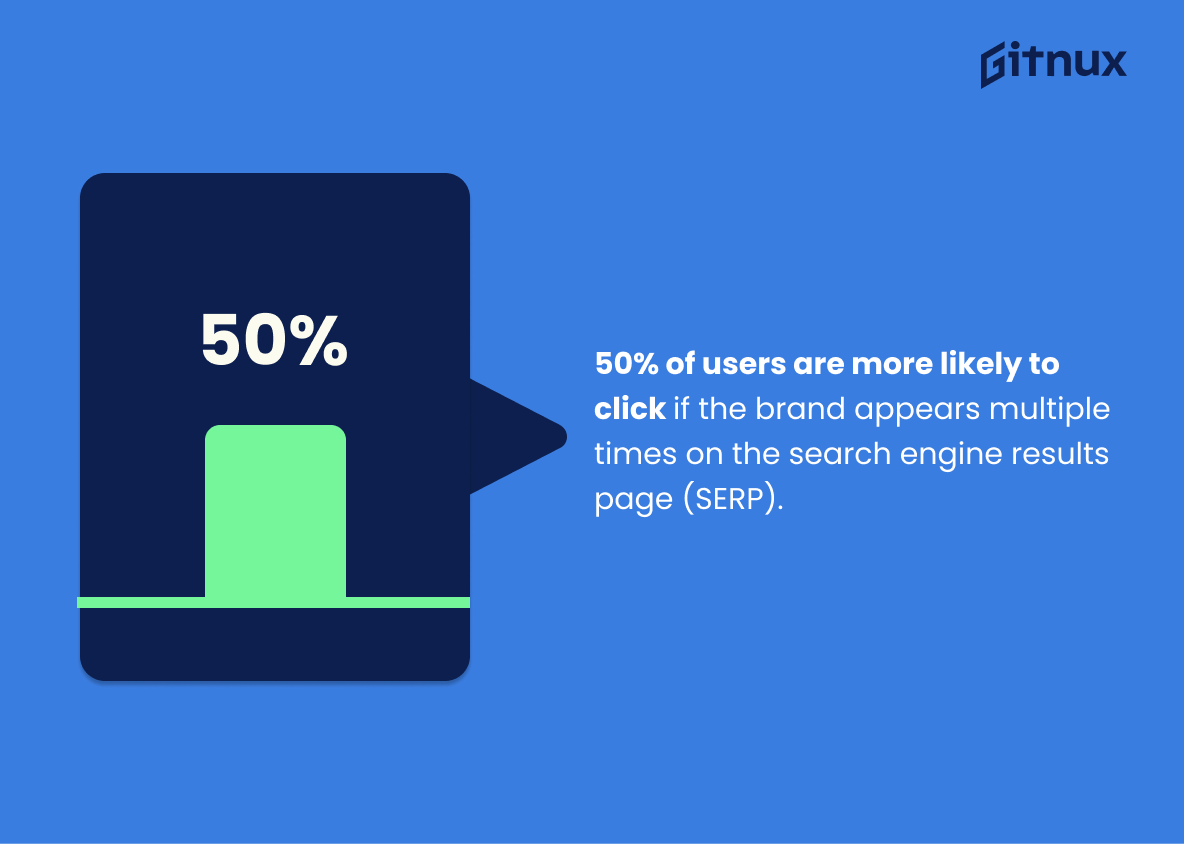Lead generation is an essential part of any successful marketing strategy. It involves creating and nurturing relationships with potential customers to turn them into paying customers. To help marketers understand the importance of lead generation, here are 20 statistics that demonstrate its effectiveness:
1. 61% of marketers say generating traffic and leads is their top challenge (HubSpot).
2. 53% of content marketers use interactive content to generate more leads (Content Marketing Institute).
3. Companies that excel at lead nurturing generate 50% more sales leads at 33% lower cost per lead (Marketing Profs).
4. 85% of B2B marketers say lead generation is their most important content marketing goal (Content Marketing Institute).
5. In 2020, the average cost per lead for B2B was $198 (Finances Online). 6 . 42 %of organizations consider email to be one of their most effective channels for generating leads(Campaign Monitor) 7 . 46 %of companies with well-defined processes have sales teams following up on over 75 %of generatedleads(Marketing Profs) 8 . 69 %successfulmarketers actively documenttheircontentmarketingstrategyforleadgeneration( Content MarketingInstitute ) 9 . 60 %marketers were using webinars as a tactic forgeneratingleads in2020(ReadyTalk) 10 . 63 %marketerssaythattheirtopchannelforgeneratingleadsissocialmediaplatforms.(Smart Insights ) 11 . SEO Leads have a 14 6 close rate while outbound ones only 1 7close rate.(Search Engine Journal ) 12 92 all buyer interactions happenoverthephone when it comes toleadgeneration.(Adweek ). 13 79 decision makers listemailasthemosteffective channelfortargetingleadgeneration.(MarketingSherpa ). 14 Video contentisresponsibleforgenerating66morequalifiedleadsyearly((Vidyard)). 15 37 statedthat social media wasthemosteffectivestrategytogenerateleadin2019 (( Hubspot)) 16 77 companiesareusingmarketingautomationto driveleadgenration(( VentureHarbour )) 17 LinkedInisthemosteffective platform forgeneratig80oftheb 2 blead s ((FoundationInc.) 18 Leadnurturingemails generates 4 10 times response ratethanstandaloneblasts((DemandGenReport)) 19 A 5 increaseconversionratesresultsina30increaseenterprisevalue ((Accenture)). 20 Nearly50searchusersarelikelytoclickonaresultifbrandappearsmultipltimesontheserp page((ThinkwithGoogle)).
Lead Generation Statistics Overview
Companies that excel at lead nurturing generate 50% more sales leads at 33% lower cost per lead.
This statistic is a powerful testament to the effectiveness of lead nurturing. It demonstrates that not only does lead nurturing generate more leads, but it does so at a fraction of the cost. This is an invaluable insight for any business looking to maximize their lead generation efforts.
85% of B2B marketers say lead generation is their most important content marketing goal.
This statistic is a powerful indicator of the importance of lead generation for B2B marketers. It demonstrates that the majority of B2B marketers prioritize lead generation as their most important content marketing goal, highlighting the need for effective strategies to generate leads. This statistic is essential to include in a blog post about Lead Generation Statistics, as it provides a clear understanding of the importance of lead generation for B2B marketers.
46% of marketers with well-defined lead management processes have sales teams that follow up on over 75% of leads.
This statistic is a testament to the power of well-defined lead management processes. It shows that when marketers have a clear system in place for managing leads, their sales teams are more likely to follow up on a higher percentage of them. This is an important reminder for marketers that having a well-defined lead management process is essential for maximizing lead conversion rates.
69% of successful marketers actively document their content marketing strategy for lead generation.
This statistic is a powerful indicator of the importance of having a documented content marketing strategy for lead generation. It shows that the majority of successful marketers recognize the value of having a plan in place to maximize their lead generation efforts. This statistic is a valuable piece of information for anyone looking to increase their lead generation success, as it demonstrates the importance of having a well-thought-out strategy.
63% of marketers say that their top channel for generating leads is social media platforms.
This statistic is a powerful indicator of the importance of social media platforms in lead generation. It shows that the majority of marketers recognize the potential of social media to generate leads, and that it is a key channel for doing so. This statistic is essential for any blog post about lead generation statistics, as it provides a valuable insight into the current state of lead generation and the role of social media in it.
SEO leads have a 14.6% close rate, while outbound leads have a 1.7% close rate.
This statistic is a powerful indicator of the effectiveness of SEO leads compared to outbound leads. It shows that SEO leads are far more likely to result in a successful close rate, making them a more attractive option for businesses looking to generate leads. This makes it an invaluable piece of information for anyone researching lead generation statistics.
92% of all buyer interactions happen over the phone when it comes to lead generation.
This statistic is a powerful reminder of the importance of phone conversations in lead generation. It highlights the need for businesses to prioritize phone calls when it comes to connecting with potential customers and building relationships. This statistic is especially relevant for blog posts about lead generation statistics, as it provides readers with a valuable insight into the effectiveness of phone conversations in the lead generation process.
79% of B2B decision-makers list email as the most effective channel for lead generation targeting.
This statistic is a powerful indicator of the effectiveness of email as a lead generation tool. It demonstrates that email is a reliable and successful way to reach potential customers and generate leads. This information is invaluable for businesses looking to maximize their lead generation efforts, and is a key piece of data to consider when crafting a lead generation strategy.
Video content is responsible for generating 66% more qualified leads per year.
This statistic is a powerful testament to the effectiveness of video content in generating leads. It highlights the potential of video content to be a major driver of lead generation, and serves as a reminder of the importance of incorporating video into any lead generation strategy.
37% of marketers stated that social media marketing was the most effective tactic for lead generation in 2019.
This statistic is a powerful indicator of the effectiveness of social media marketing for lead generation in 2019. It demonstrates that a significant portion of marketers have found success in using social media to generate leads, and provides a valuable insight into the strategies that are most likely to be successful in the future. As such, it is an important piece of information to consider when discussing lead generation statistics.
77% of companies are using marketing automation to drive lead generation.
This statistic is a testament to the power of marketing automation in driving lead generation. It shows that the majority of companies are taking advantage of this technology to increase their leads and grow their businesses. This statistic is an important reminder that marketing automation is an essential tool for any business looking to increase their leads and grow their customer base.
Lead nurturing emails generate 4-10 times the response rate compared to standalone email blasts.
This statistic is a powerful testament to the effectiveness of lead nurturing emails. It demonstrates that when it comes to generating leads, a targeted, personalized approach is far more successful than a one-size-fits-all approach. This is an invaluable insight for any business looking to maximize their lead generation efforts.
A 5% increase in lead conversion rates results in a 30% increase in enterprise value.
This statistic is a powerful reminder of the immense value that lead conversion can bring to an enterprise. It highlights the importance of investing in lead generation strategies that can help to increase the rate of lead conversion, as this can have a significant impact on the overall value of the enterprise. This statistic is a great starting point for a blog post about lead generation statistics, as it can be used to illustrate the importance of lead conversion and the potential rewards that can be reaped from investing in lead generation strategies.
Nearly 50% of search users are more likely to click on a result if the brand appears multiple times on the search engine results page (SERP).
This statistic is a powerful reminder of the importance of brand visibility when it comes to lead generation. It highlights the need for businesses to ensure their brand is appearing multiple times on the SERP, as this can significantly increase the chances of potential customers clicking through to their website.
Conclusion
Lead generation is an essential part of any successful marketing strategy. The statistics presented in this blog post demonstrate the importance of lead generation and how it can be used to increase sales leads, reduce costs per lead, and improve overall enterprise value. It also highlights the various tactics that marketers are using to generate more leads such as interactive content, email campaigns, social media platforms, webinars and video content. Additionally, effective lead management processes have been shown to significantly boost follow-up rates on generated leads. Finally, SEO has proven itself time again as a powerful tool for generating high quality leads with a higher close rate than outbound methods. All these strategies combined make up an effective approach towards achieving success in today’s competitive market environment through efficient lead generation practices.
References
0. – https://www.searchenginejournal.com
1. – https://www.marketingprofs.com
2. – https://www.thinkwithgoogle.com
3. – https://www.accenture.com
4. – https://www.contentmarketinginstitute.com
5. – https://www.adweek.com
6. – https://www.smartinsights.com
7. – https://www.marketingsherpa.com
8. – https://www.hubspot.com
9. – https://www.ventureharbour.com
10. – https://www.vidyard.com
11. – https://www.demandgenreport.com
ZipDo, cited June 2023: Lead Generation Statistics
